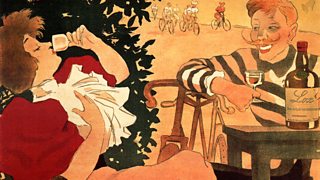11 things you didn't know about aperitifs
In French, 'l'aperitif'. In Italian, 'l'aperitivo'. We don't have a translation in English, but the aperitif has long captured our imaginations. Once deemed old fashioned, long established brands like Campari and Dubonnet are making a comeback.
Fancy an olive? We've got some cocktail sticks somewhere. Whilst we're looking, here are eleven things you probably never knew about the humble aperitif.
1. The word aperitif comes from the Latin verb aperire, meaning 'to open'.

2. Don't get confused: aperitif can mean both a small snack of food before starting a main meal (cheese straw, anyone?), as well as an alcoholic beverage. In fact, in Italy an aperitif is never one or the other, you get presented with a tray of delicacies alongside your glass.
3. Despite 007’s fondness for a "martini, shaken not stirred", the popular Italian aperitivo the Negroni was the first drink ordered by James Bond in the first of Ian Fleming’s books, Casino Royale. The Negroni cocktail is traditionally made of one part gin, one part Campari and one part vermouth rosso, plus orange peel.
4. The Italian Spritz should be distinguished from the American cocktail of wine and sparkling water made famous by 1980s diet fads. The Spritz originated in Northeast Italy where it is prepared using prosecco wine and a dash of a bitter liqueur, such as Aperol or Campari. The word ‘spritz’ is derived from the German ‘spritzen’ for ‘spray’ or ‘splash’.
5. According to the Telegraph, the Queen’s favourite aperitif is a gin and Dubonnet garnished with lemon…sometimes known as the Zaza.
6. Ideally an aperitif should taste light, crisp and clean. There are no hard and fast rules that say that you can't experiment with aperitifs and design your own non-alcoholic drinks. Just keep those three qualities in mind.
7. Aniseed infused pastis emerged in the South of France. Pastis became popular in France in the wake of the ban on aniseed infused spirits – namely absinthe – in 1915. In his novel The Sun Also Rises, Ernest Hemingway said of the pastis brand Pernod: “Greenish imitation absinthe. It tastes like licorice and it has a good uplift, but it drops you just as far.”
8. In 2007, a Facebook page called set up by three French students became one of the most viewed Facebook pages in France. In 2016, the friends have opened Paris’ first shop dedicated to the aperitif.
9. According to Oxford University food psychologist Charles Spence, the prevalence of bitter drinks as aperitifs might be because we associate bitterness with poison. Therefore, upon drinking a bitter drink, we become more alert, and ready for the meal that we’re about to consume.
10. Until recently, the bitter aperitif drink Campari got its red colour from cochineal beetles. Now though, the drink uses artificial colouring.
11. Digestifs (not to be confused with aperitifs) are for the other end of the meal, served after food with an aim to aid your digestion. They are often unmixed liquers such as a glass of brandy, port or a fortified wine. Sometimes herbs are added to help settle your stomach.

The life of a Victorian hipster
Bosom Caressers, Corpse Revivers and a real Eye Opener.
To learn more about the aperitif, listen to where food writer Diana Henry explores the history of the aperitivo in Italy, from it's Roman origins to it's significance for the Futurist movement.
More from Radio 4 in Four...
-
![]()
Don't forget your aperitifs.
-
![]()
Craft beer names can get faintly ridiculous. Can you tell which of these are real ales?
-
![]()
The perfect formula for a cup of tea is a lot more complicated than you think.
-
![]()
The Danes have got happiness covered with their concept of hygge.




